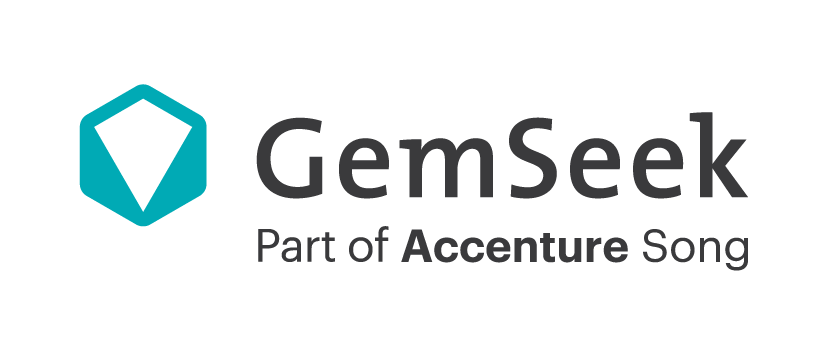It’s been 4 years since I joined GemSeek’s Healthcare Insights & Analytics team. I’ve been fortunate to be involved in many of the 150+ customer experience (CX) and Voice of the Customer (VoC) projects we have run together with 5 out of the 10 largest MedTech leaders on the global map.
Here are my most significant learnings solely gained from my experience working in the medical device industry.
Customer Experience is the main differentiator
Most projects start with one fundamental question:
How to increase value, encourage preference, and boost loyalty?
To find the answer, we investigate what customers find important and how the market meets their expectations. MedTech customers commonly say they value:
- patient safety
- clinical outcomes
- operational & cost efficiencies
- customer experience.
Whilst these are hardly surprising, medical device manufacturers focus on the former variables and pay less attention to CX. Experience improvement is the most certain way to achieve quick return in an environment where companies are likely to prioritise other initiatives over CX.
From my observations, there are two reasons why customer experience is not given the necessary attention.
- Product over experience
Most of the players in the medical equipment field are product-led organisations with traditional focus on technological innovation and advancing product features. Putting the customer first and center is a slow process for such companies. It requires rethinking product-based structures and takes a cultural shift towards a more holistic focus on customers and structuring processes around their needs.
- Organisations prefer to focus on factors with less impact on preference and loyalty
Very often organisations fail to realise that not everything important moves the needle. Study after study, I see how most of what customers find important are things we would categorise as hygienic factors. Those would be deal-breakers if brands are not able to meet the minimum standard and underperform compared to their competitors, but when executed at a much higher standard in comparison, would have little impact on boosting loyalty and preference. Safety, outcomes, and efficiencies often fall into this category.
Customer experience, however, is a clear differentiator. Tested time and time again in multiple studies, we’ve discovered that when it comes to CX–more is more.
Such an example is a recent study for a customer, where we discovered that improving their frontline sales employees’ knowledge had a greater impact on customer satisfaction and cross-sale initiatives than some of their largest and cost-heavy product advancement projects.

Simplicity is Power
THE SUCCESS OF YOUR PRODUCTS, COMMUNICATION & STRATEGY LIES IN SIMPLICITY
Much of the work we do at GemSeek involves confirming the viability of novel ideas, value propositions, and communication strategies. Often we discover one thing in common–the solutions our clients want to test are packed with advanced features and come with claims of solving many challenges for many stakeholders. Some of the MedTech executives we work with are surprised when they learn these are the solutions and messages that usually perform the worst.
In contrast to MedTech companies, which typically view technological advancements positively, customers frequently exhibit skepticism or even outright resistance towards innovative features or functionalities. This is because everything new is perceived to come with possible workflow disruptions, new learning requirements, and new uncertainties. In such a risk-averse industry, these can easily balance out the additional value brought by new features.
My most frequent recommendation when it comes to new solutions is:

When it comes to new solutions, ensuring ease of use and smooth integration with existing infrastructures is crucial. When addressing messaging, my biggest recommendation would be working your way through medical professionals’ fear of complexity. The simplest way to adjust your messaging is reducing the buzz words such as ‘advanced’ and ‘innovative’.
Simplicity is the winning strategy when it comes to choosing long-term strategic direction as well as ensuring accountability. I’ve witnessed MedTech organisations struggling to bring improvements because they set out to do too much at once. Focus on a small list of priorities and track progress with simple and easy-to-understand indicators.
Asking Customers is Not Enough
ACQUIRE MUCH MORE INSIGHTFUL KNOWLEDGE ABOUT THE FACTORS THAT INFLUENCE DECISIONS
The transition from intuition-driven choices to data-driven decision-making is evident in numerous healthcare organizations. This implies heightened expectations for individuals entrusted with incorporating customer feedback into these entities.
While getting consumer feedback is a crucial first step, self-reported customer insights may present a very distorted picture. For instance, when given a range of choices, customers often indicate that each option significantly influences their decision. They are also less likely to admit a readiness to pay more than the bare minimum. This occurs because conventional surveys expose participants to an unrealistic scenario without constraints. As a result, premium offerings are perceived as essential when no cost trade-offs are involved.
I usually advise using indirect methods of gathering customer insights, such as GemSeek’s award-winning conjoint tools, when making judgments about product configurations, service levels, and pricing. These strategies place potential clients in a market environment where they must make judgments similar to those encountered in the real world.
Instead of simply asking respondents what they think,

When choosing which improvement projects to pursue, indirect customer insights also perform best. Customers make everything seem more essential than it actually is, which makes it difficult to prioritise your efforts. They also tend to justify their answers when they are directly questioned. Instead of learning what genuinely motivates customers in one direction or the other, this leads to ideas about what should be motivating customers (skewing towards rationality).
When it comes to prioritising, one effective strategy is to employ data analytics tools to identify the underlying causes of performance indicators (such as customer satisfaction and loyalty) based on data trends.
Winning Market Share Requires the Right Focus on Non-Customers
I always ask new customers how they utilise insights to inform strategy and day-to-day decisions when we first chat. I rarely get unexpected responses because the majority of MedTech businesses take a similar stance.
The biggest difference tends to be in how much companies rely on their own customers for insights and how much they leverage other sources. Finding the ideal balance can be difficult and may call into question long-standing organisational norms.
On one end of the spectrum, there are businesses that place a strong emphasis on the opinions of their own clients and have little insight into the market at large. Their experience measuring tools frequently limit themselves to only current clients and lack context. They cannot successfully assess their development or inspire action if they do not benchmark their performance against those of competitors.
For instance, a company I formerly worked for found it difficult to argue for increased attention to the customer experience because they were already observing slight year-over-year improvements in related measures. Only until we demonstrated to them that competitors were developing at a much faster rate and that failing to stay up with the industry would result in lost opportunities did they understand they were actually lagging behind.
The same businesses frequently use their own customers to test and validate things. They extrapolate what they have discovered about people who already favor them to those who they hope to convert. This is a danger since it fails to address the reasons why some potential clients choose to do business with rivals and what might persuade them to switch.
One of the companies I spoke with, for instance, cancelled the development of a premium product after receiving negative feedback from their current clients, who belonged to a totally other market sector looking for “value for money.” If the idea in development had been objectively tested with the intended audience, I’m not sure they would have come to the same conclusion.
On the other end of the scale, there are businesses that place a strong emphasis on competitive intelligence. As a result, there is a chance that you might start responding more to what your competitors are doing than to what the market genuinely requires. Such businesses may feel forced to follow their rivals’ lead without knowing whether their investments are sensible given the needs of their actual customers.
This group should shift its attention from analysing what rivals do to studying its clients, in my opinion.

Frequently, there is a discrepancy between what companies promote and the reasons their customers choose to collaborate with them. This is particularly noticeable in the realm of innovation, where I regularly observe companies overemphasizing features that are not as significant to customers and do not contribute to gaining market share from competitors.
If you are curious to learn how we can help you increase the success of your solution launches, messaging and customer experience strategies, have a look at our healthcare solutions here.




